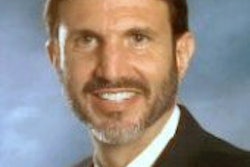ORLANDO - Over the next five years, diagnostic radiology practices face five key challenges, according to Dr. Frank Lexa, clinical associate professor of radiology at the University of Pennsylvania Medical Center in Philadelphia and keynote speaker at this year’s American Healthcare Radiology Administrators (AHRA) conference.
Lexa cautioned delegates to look soberly at the forces shaping radiology today, including "disruptive technologies," reimbursement, flux in demand for radiology services, supply side fluctuations, and changing customer expectations.
Dealing with "disruptive technologies"
"Disruptive technologies" are those that well-managed, savvy practices might reject out of hand, believing that because these devices are simpler, cheaper, and of lower capability and performance, they won’t amount to much. But these very technologies --like that small modality scanner in an orthopedist’s office, or lossy image compression/transmission software -- are cracking open imaging territory that used to be firmly in the hands of radiologists.
"(The thought is,) Who would want a lousy scanner that only scans ankles?" Lexa said. "We all want the big scanner that allows us to say we can offer the best imaging available, and we ignore these other things. But they’re good enough for a podiatrist or orthopedic surgeon, and they can chip away at your business."
Disruptive technologies can bring down longstanding obstacles that have kept diagnostic imaging from spreading into a wider arena than radiology by not only lowering capital equipment acquisition, siting, and maintenance costs, but also by decreasing the skill needed to handle the device -- which can lead to reduced personnel requirements. (After all, Lexa joked, if the technology exists to take your fast-food order by automated clown at 3:00 a.m., it exists to perform MRI scans via remote control as well.)
Fewer obstacles to imaging, combined with patients who are looking for one-stop shopping (they’d rather have the MRI performed and interpreted on the same day as their neurologic/mammographic/cardiologic consultation, rather than having to leave the consulting doctor’s office, schedule an appointment, have the scan, and wait a few more days for results) creates a business environment that seriously challenges diagnostic radiology’s traditional territory.
Wrestling with reimbursement
The fact that the U.S. is in the middle of a severe federal budget deficit is a major challenge for diagnostic radiology, especially since, in this type of fiscal climate, the Centers for Medicare and Medicaid Services (CMS) starts to focus on what it considers to be areas of excessive spending, Lexa said.
"CMS reported a 22% increase in radiology spending in 2004 to 2005, and (with numbers like this, radiology is) going to be squarely targeted," he said. "That’s partly where the (Deficit Reduction Act of 2005) came from."
Powerful forces are at work, such as the state of Social Security, the general lack of retirement savings in American households, and the record number of Baby Boomers who are retiring now, Lexa said. Social Security will begin to deplete in 2017, with technical bankruptcy arriving by 2041; the government's fixes affect taxpayers and recipients. But the bureaucrats at CMS have a third option for cutting costs: reducing reimbursement levels or rationing services.
"That’s the risk we’re facing," Lexa said. "And some of the solutions point to going head to head with the AARP. But if you give me one lobby in America that we don’t want to fight with, it’s the AARP. We need to build a relationship with them."
Changes in demand for radiology services...
It may be good news to hear that the demand for imaging is estimated to continue, with double-digit growth projected through 2020, due to a number of factors, according to Lexa:
- People over 65 require more imaging per person (and the oldest Baby Boomers were born in 1946, so they haven’t even retired yet)
- Heightened demand from consumers and referring doctors for imaging in the quest for diagnostic certainty
- The use of defensive imaging to avoid malpractice suits
But all that imaging won’t be in radiology suites: The biggest growth in imaging use is coming from nonradiologists, and the separation of technical and professional activities will continue to eat away at traditional structures, allowing imaging to become more and more widespread.
...and supply-side ebb and flow
There are competing views about whether there’s a glut or a dearth of radiologists. In the 1960s and 1970s, the government established more medical schools in an attempt to head off what it saw as a looming shortage. But the managed care environment of the 1980s predicted the opposite, a surfeit of physicians that would flood the market.
In the past decade, the pendulum has swung once more to point to a shortage, especially since policymakers estimate that the number of Americans likely to require healthcare will peak in the next 20 years, Lexa said. The shortage won’t just be radiologists, but also radiologic technologists -- making diagnostic radiology practices even more vulnerable to the migration of imaging.
"The current year-over-year growth rate in radiologists is a 2% increase in residency slots," Lexa said. "And the year-over-year growth rate in imaging is more than 20%. The supply and demand mismatch is a recipe for disaster, especially since over half of imaging in the U.S. is no longer being done in traditional venues."
Customers, not patients
Finally, diagnostic imaging practices face the challenge of shifting their paradigm about who they serve. What is a customer? Lexa believes that a customer is someone who makes or influences the decision to buy services, regulate business, or affect brand perception, Lexa said.
Customers include referring medical professionals, patients, families, hospitals, the government, payors, disease and patient advocacy groups, and joint-venture partners. Imaging practices would do well in particular to examine assumptions about their patients, whose expectations regarding their healthcare have changed dramatically since in recent decades.
"Patients are acting like customers," Lexa said. "There’s a rise of "concierge" medical services, greater consumer control over medical decisions, and a heightening interest in complementary or alternative medicine -- in fact, these visits now surpass primary care visits in the U.S."
How can diagnostic imaging practices tackle these challenges? Don’t believe every prediction you hear -- whether it is about supply and demand or about new technologies. Make your own projections, out at least five years, and consider all the stakeholders who can affect your practice. But most of all, use hard-won wisdom, according to Lexa.
"With your experience, you’re perfectly positioned to go forward and beat back some of the folks who are taking away your business," he said.
By Kate Madden Yee
AuntMinnie.com staff writer
July 9, 2007
Related Reading
Keeping sonographers by improving working conditions, July 5, 2007
What does your MRI vendor know about your quench vent that you don't?, July 3, 2007
Exclusive provider agreements: A benefit or detriment to a radiology practice?, July 2, 2007
The DRA at six months: How outpatient imaging centers are coping, June 26, 2007
Diagnostic radiology 2007 -- New year: BIG challenges, April 20, 2007
Copyright © 2007 AuntMinnie.com




















